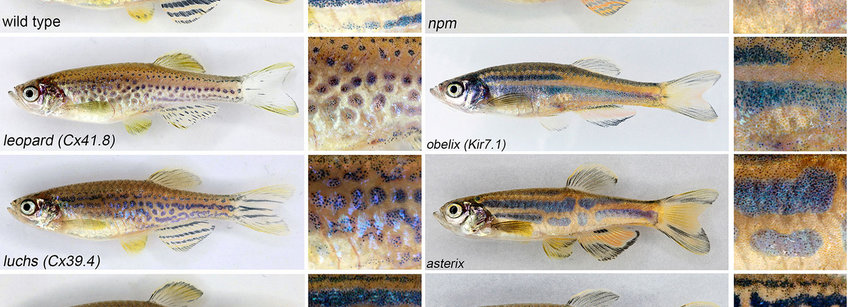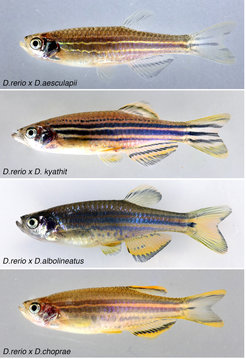
Methods and technology development

GENETIC ANALYSIS OF COLOUR PATTERN MUTANTS:
Many adult viable mutants affecting pigment patterning have been isolated in large-scale screens performed in our lab, and mapping and cloning of the mutations is an important part of our technology repertoire. In addition to a total of 20 published genes involved in adult patterning, further ten unpublished genes with spectacular phenotypes are being studied. We analyse chimeric animals created by blastomere transplantations to assess the requirement for the respective gene function in specific cell types and the interactions among and between the different cell types involved in stripe formation.
CRISPR/CAS9 MEDIATED GENE EDITING:
We employ this powerful novel tool to generate loss-of-function alleles of candidate genes in zebrafish and to introduce fluorescent markers into genes to analyse their site of expression. Loss-of-function mutations in genes known to be involved in colour pattern formation are also generated in closely related Danio species lacking stripes (Danio albolineatus) or displaying vertical bars (Danio aesculapii).
LONG-TERM LINEAGE IMAGING:
We employ either blastomere transplantations or use the Cre/loxP technique to induce fluorescently labelled clones in sox10-expressing (i.e. neural crest-derived) embryonic cells in order to monitor the dynamics of cell divisions, cell spreading and cell shape changes during stripe formation.
HYBRIDS AND CHIMERAS:
We create hybrids between wild type and mutant individuals from different Danio species (mostly by in vitro fertilisation) with the aim to identify genes involved in speciation. Chimeras generated by blastomere transplantations allow us to test for the requirement of specific cell types in organising the different pigment patterns.
GENOMIC ANALYSIS:
To identify novel components in the environment that influence the self-organisation of pigment cells we compare the transcriptomes from skin of different body regions (fins, stripes, dorsum) by RNAseq analysis. Candidate genes are tested by CRISPR/Cas9 generated knock-outs. We also compare exome sequences from different Danio species; whole genome sequencing is done in collaboration with the Sanger Institute. The data analysis will allow us to identify genes that might be involved in speciation.
